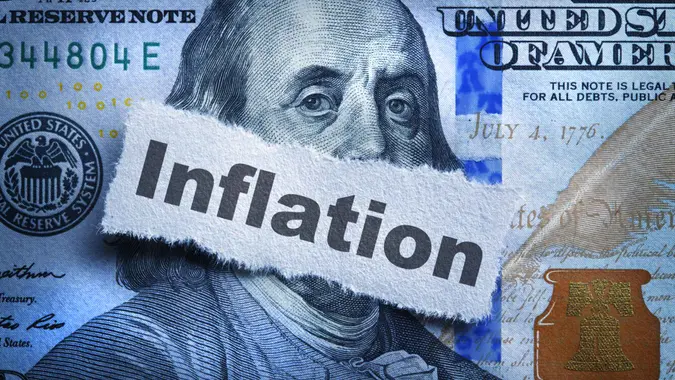Nearly 70% of Middle-Income Americans Are Missing Out on This Easy Way To Grow Their Money

Commitment to Our Readers
GOBankingRates' editorial team is committed to bringing you unbiased reviews and information. We use data-driven methodologies to evaluate financial products and services - our reviews and ratings are not influenced by advertisers. You can read more about our editorial guidelines and our products and services review methodology.

20 Years
Helping You Live Richer

Reviewed
by Experts

Trusted by
Millions of Readers
Most people want more money, yet many people are missing out on one very easy way to grow their wealth. A nearly effortless way to boost your savings is to keep your money in a high-yield savings account, and thanks to inflation, the top 1% of these accounts are now offering rates above a 4.5% annual percentage yield, CNBC reported. Yet a recent survey from Santander found that just 32% of middle-income households have moved funds to a high-yield account to take advantage of the higher interest rates now available.
Here’s a look at why you should consider making this easy money move.
It Takes Less Effort Than You Might Think
Some people may be hesitant to open a new bank account because they think it will be a big hassle. However, you can now typically open these accounts seamlessly online, without having to step foot in a physical bank.
“In a digital era, you can transfer funds between banks in a matter of minutes,” said Bob Chitrathorn, CPFA, founder and vice president of wealth planning at Simplified Wealth Management. “There are even accounts now that will move from one bank to another for you if another has a higher yield. You can set up an online account like this in less than five minutes — then it’s pretty much on auto after that.”
You Could Be Earning Thousands of Dollars More on Your Savings
While you may not think a few percentage points really matter, with large sums of money over long periods of time, the interest you are missing out on could be significant.
“Americans have lost out on at least $291 billion in interest since the start of 2019 by keeping their savings with the biggest U.S. banks,” said Max Lane, CEO of Flourish, a high-yield cash management solution. “Traditional savings accounts currently have an average APY of about 0.42% while high-yield solutions are offering 4.5% or greater. In dollar terms, that’s a difference of thousands of dollars for many households. [That’s] extra cash that could pay for a vacation, health emergency or tax payments.”
Get the Perks of High Returns While Remaining Liquid
While you typically don’t think of putting money in a bank account as an “investment,” if you take advantage of a high-yield account, you can get significant returns, much like you would with traditional investment vehicles. Plus, you keep the ability to access your cash if you need it.
“Most people don’t think of cash as an investment but rather a source of protection and safety. But cash is becoming an asset class again,” Lane said. “With a lot of folks feeling the squeeze of their purchasing power declining, the question everyone should be asking is if their money is working for them right now. There is no reason why you shouldn’t be getting over 4.5% on cash right now, especially because high-yield accounts are protected by the FDIC (up to a certain amount) and daily liquid. Given the Fed continues to signal that rates could be higher for longer, it is critical investors make sure they are optimizing the yield on their reserve savings right now.”
As With Any Financial Move, Consider Potential Drawbacks
For many people, keeping funds in a high-yield savings account will provide benefits that outweigh any downside. However, it’s important to read the fine print before opening up any new accounts.
“Some may have a higher minimum deposit required,” said Andrea Woroch, consumer and money-saving expert. “Also, look at potential fees and find out how easily you can transfer funds between accounts for access. If you need more regular access, you want to make sure there isn’t a strict limit on transactions, otherwise, you could be charged a fee. Finally, make sure you’re only depositing up to the amount that is FDIC-insured. And make sure it is insured!”
More From GOBankingRates
- Nearly 1 in 3 Americans Hit by a Costly Holiday Scam, Norton Survey Shows -- How To Avoid This
- Here's What the Average Social Security Payment Will Be in Winter 2025
- How Middle-Class Earners Are Quietly Becoming Millionaires -- and How You Can, Too
- The Easiest Way to Score $250 for Things You Already Do
 Written by
Written by  Edited by
Edited by 

























